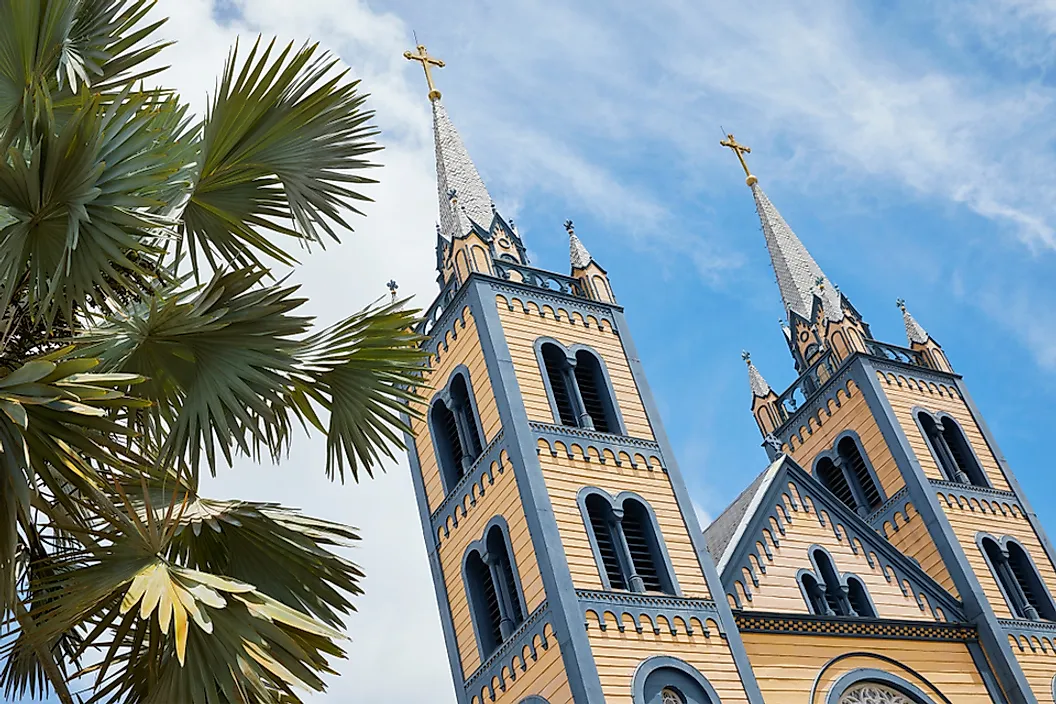The Major Religions Practiced in Suriname

Suriname is the smallest country in South America and is located along the coast of the Atlantic Ocean in the northeastern part of the continent. The country covers an area of about 165,000 square km and has a population of 558,368 individuals. Prior to the arrival of Europeans in the 16th century, Suriname was home to a number of indigenous peoples. Following the colonization of Suriname by the Dutch, African slaves and later indentured laborers from Asia were brought to work in the country’s European-owned plantations. Accordingly, the religious demographics of Suriname reflect of the multicultural nature of the country's population.
According to the 2012 census, Christianity is the predominant religion in Suriname, accounting for 48.4% of the total population of the country. Hinduism and Islam have the second and third largest religious populations in the country, composing 22.3% and 13.9% of the population, respectively. Other religions practiced in Suriname include Winti (1.8%), Javanism (0.8%), and Judaism. Additionally, 7.5% of the population identify with no religion, while 3.2% chose not to respond to the question.
Christianity Is the Predominant Religion in Suriname
Christianity is the dominant religion in Suriname. The Anglican Church is the oldest Christian denomination in the country, while Catholicism and Protestantism have a significant presence. In particular, the Pentecostal church and the Moravians are the largest Protestant denominations active in Suriname. The first Catholic missions arrived in Suriname in 1683, however the growth of Christianity was initially slow, and did not spread rapidly until the country came under Dutch rule in 1816. A large proportion of the indigenous inhabitants and West African slaves accepted the religion, and their descendants now comprise the majority of Suriname’s Christian population.
Hinduism in Suriname
The population of Suriname contains the third highest proportion of Hindus in in the Western Hemisphere. Most arrived from India to work in Suriname's Dutch plantations, often as indentured laborers from British India and supported by an agreement between the Dutch and British. The more liberal policies of the Dutch allowed Hindus to practice their religion in Suriname. Following Suriname's independence, most Hindus settled in the coastal regions in north Suriname, where the form the religious majority. Several Hindu temples exist in Suriname today.
Islam in Suriname
Muslims of Suriname trace their origins to South Asia and Indonesia, where they were brought as indentured laborers. Most Muslims in Suriname are Sunnis, while small sections of the population follow Sufism, Javanese Kejawèn, and other syncretic faiths.
Indigenous Religions in Suriname
Many indigenous inhabitants of Suriname continue to practice traditional religions, most of which focus on the worship of nature and all living beings. A significant segment of Africans brought to Suriname as slaves also follow their traditional African religions. Ancestor worship is a common practice of such religions. Amerindian and Afro-descendant converts to Christianity in Suriname also include traditional beliefs and rituals in their worship.
Religious Freedom and Tolerance in Suriname
Suriname provides its citizens the freedom to choose and practice a religious faith of their choice. The level of religious tolerance in the Surinamese society is generally high, however political parties usually have strong ethnic ties to one particular faith. However, these parties do not mandate its members or leaders to adhere to any particular faith.











